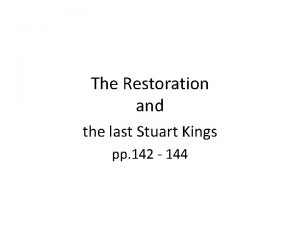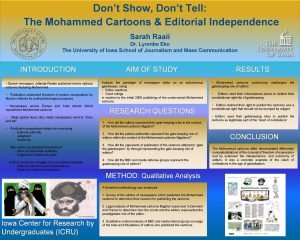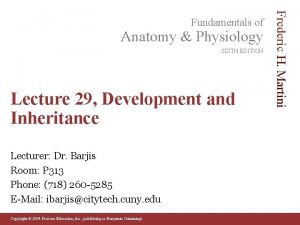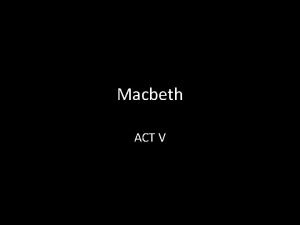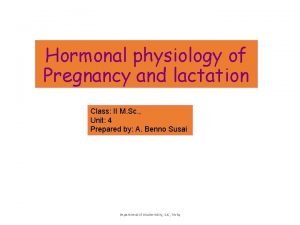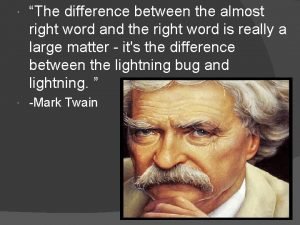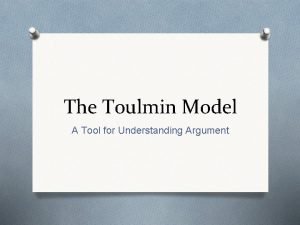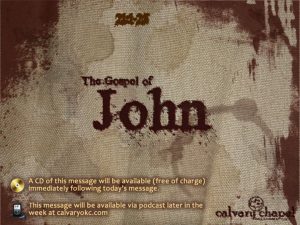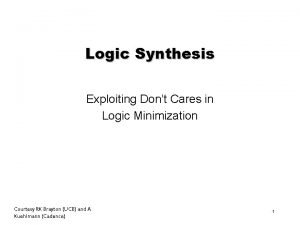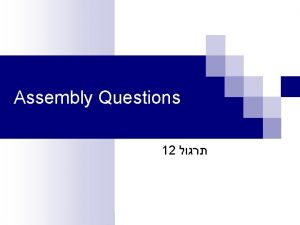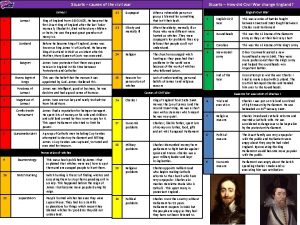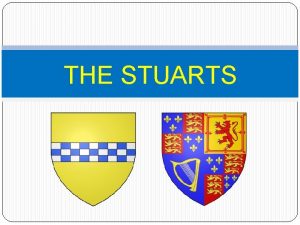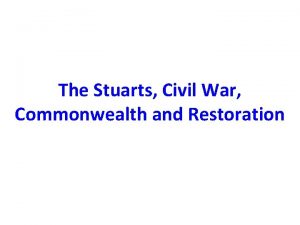The Stuarts Dont Let The Sun Go Down






































- Slides: 38

The Stuarts

Don’t Let The Sun Go Down On Me • • Elizabeth hated the idea of getting old. Remained proud and strong right up until the end: “Must! Is must a word to addressed to princes? Little man, little man! Thy father, if he had been alive, durst not have used that word. " addressed to Robert Cecil when he advised her to rest. • • • On her death bed, Elizabeth announced that James VI of Scotland should succeed her. Elizabeth died on 24 th March, 1603. On the death of Elizabeth, England Scotland were finally joined, a feat that had eluded all English monarchs up to thus point.

The End of ‘Gloriana’ • • 45 year reign, nearly seventy. No children, so a peaceful succession was not certain. Internal tensions became more prevalent in Elizabethan society. Although Elizabeth had constructed the Anglican Church, defeated the Armada and ‘pacified’ Ireland, Tudor stability was still prone to decay. Her constancy which had been one of her strengths, in old age deteriorated into indecisiveness, inertia and neglect. Corruption and falling revenue laid the seeds for the civil war that would engulf England some 4 o years later. To the relief of all, the succession was peaceful and James VI of Scotland became James I of England.


Crown or Commons • • • It was the events of the 17 th Century that really made Britain different from the rest of continental Europe. At the beginning of the century the monarch was all-powerful, by the end 2 kings had been toppled and the monarchy itself had been overturned and a republic installed (albeit only for a short period of time. ) England was going to be a parliamentary democracy, very different from all other European states of the time.

James VI and James I • • The English had conquered Ireland Wales in the Middle Ages but never Scotland. Under James VI both islands were under the same ruler for the first time ever. James even named himself ‘King of Great Britain’ Anglicized his name ‘Stewart’ to ‘Stuart’ James believed the English Parliament would behave much like the Scottish parliament (i. e. do as he said). He was much mistaken. Much of the conflict between James and parliament can be attributed to James’ belief in the Divine Right of Kings.

The Puritans And The Catholics • • Both the puritans and the Roman Catholics had high hopes for James’ reign. Both were sorely disappointed. • THE PURITANS – James hated the Puritans, believed them the same as the Scottish Presbyterians whom he had persecuted. – Hampton Court 1604, meeting between Puritans and James. He dismissed their calls for the Church of England to have no bishops by shouting ‘No bishop, no King!’ – Archbishop of Canterbury then instructed to seek out puritans and force them from the church. – This persecution was the catalyst that led to the sailing of the Mayflower and the founding of a colony at Cape Cod. • THE CATHOLICS – Catholics believed James would be sympathetic towards them – he made peace with Spain and tried to have his son married to a Spanish princess. – Yet he re-imposed fines on Roman Catholics and continued to banish their priests. – Inspired the Gunpowder plot.

The Gunpowder Plot • • Had the gunpowder plot been successful all hell would have broken loose. There may well have been a foreign invasion, civil war and most certainly sectarian slaughter. However, it wasn’t successful. The plot involved filling the cellars under the Houses of Parliament with gunpowder and then setting it off – very simple. However, one of the conspirators sent a warning letter to one of Lords (Lord Monteagle) due to be at the House on the fateful day. He notified the authorities who raided the cellar and arrested Guy Fawkes, the man chosen to look after the explosives. Guy Fawkes was tortured, gave up the names of the other conspirators (Robert Catesby) etc. and they were all executed. The story of the gunpowder plot is now part of British folklore and celebrated on November 5 th every year – as James I didn’t want anybody to forget.


James vs. Parliament • The English soon came to despise James: – He relied on favourites – Didn’t like his peace with Spain – Couldn’t stomach ‘The Divine Right of Kings’. Sir Edward Cole, the Lord Chief Justice said this was going against English Common Law. • As a result, Parliament refused to give him money, so James raised money in different ways: – – • He borrowed it Forced people to lend it to him Sold trading monopolies Created a new hereditary title ‘Baronet’ which he sold to people. Yet, James still did not have enough money and on his death he left England is a sorry state of affairs.

The King James Bible • • • James supported the Anglican Church and sponsored a translation of the Bible that is now known as the King James or Authorized Version. In 1604, King James authorized a committee of about 50 scholars to prepare a revision of earlier English translations of the Bible. These men were the best Biblical scholars and linguists of the day. The King James Version of the Bible appeared in 1611. No important English translations of the Bible appeared for more than 200 years after the publication of the King James Version. It was the most widely used translation in the English-speaking world. The King James Version was a landmark in the development of English prose. Its elegant yet natural style had enormous influence on English-speaking writers. It ranks with the complete works of Shakespeare and the Oxford English Dictionary as one of the cornerstones of the English language. This version is so important in terms of its linguistic impact. Many of the phrases included are still commonplace.


Charles I • • Came to the throne in 1625 Engaged in a struggle for power with the Parliament of England. The struggle centered around his need for money and parliament’s wish to limit his power. Charles, like his father believed in the ‘Divine Right of Kings’ Many Englishmen were unhappy at Charles’ interference in the English church. Levied taxes without parliament's consent. Religious conflicts aplenty during his reign: – Didn’t successfully help protestant forces during The Thirty Years War – Married a Roman Catholic princess – Appointed controversial William Laud to the post of Archbishop of Canterbury – Many believed he moved the Church of England too close to the R-C one (High Anglican Church) • He also continued to persecute the Puritans (as his father had done before)

William Laud • • Charles’ Archbishop of Canterbury Beleived Roman Church was the true church but corrupted. Insisted Puritans conformed and observed all church ceremonies. Burned their books and prohibited their meetings Strict uniformity of ritual. Censored the pulpit Widely feared that he was allowing popery back in and the Anglican church was being betrayed and abandoned. Laud also attempted to restore the power and authority of the bishops, church courts and clergy: – – – • • • Church lands restored Clergy’s power to enforce laws of God strengthened Clerical appointments restructured and control of tithes. In short, moved Church of England back towards Rome. Pope even offered to make Laud a Roman Catholic bishop. Ultimately paid for his actions with his life

The Puritans • • Calvinism/Puritanism More democratic form of Protestantism Luther was socially conservative, Calvin, on the other hand sought to reform society. Calvin preached to businessmen and tradesmen Concept of ‘The Elect’ – unelected condemned to eternal damnation. If you did well in business – a sign of divine grace No intermediary required between God and His people – no need for bishops/priests. A church structure like that of the R-C church unnecessary. Puritans were Calvinists who had returned to England from Geneva to purify the Anglican church.

Puritans: Characteristics • • • No ornamentation in church Do not make sign of cross No organ/hymns etc. Do not kneel at the mention of Christ’s name. Do not stand when the Gospel read. Easily recognisable – black suit with plain white shirt/blouse/apron Laughter, dancing, singing etc. seen as sinful. Thriftiness and diligence were traits to be cultivated. Object of life was to earn money thus showing yourself to be one of the elect.

Dissolving Parliament • • • Many in Parliament believed Charles was too close to George Villiers, Duke of Buckingham (lovers? ) Also Parliament unhappy with the policy of forced loans to pay for Spanish War. In 1628, Charles was pressured into signing the Petition of Rights: – Charles had to respect the rights and liberties of his people. – There could be no imprisonement without trial. – Taxes could not be raised without the consent of Parliament • • To add insult to injury, Sir John Eliot, the leading member of Parliament, persuaded his colleagues to restrict Charles’ ability to raise ‘Tunnage and Poundage’ to just one year. Eliot also attacked the changes being made to the Church of England. Charles understandably angry and sent his messenger, Black Rod, to dissolve Parliament, they refused him entry and passed three resolutions (which in effect stated that Charles was acting treasonously) Then Parliament dissolved – remained so for 11 years.

George Villiers, Duke of Buckingham

Scottish Presbyterians Recalling Parliament • • • Charles, as well as upsetting the Puritans, set about ‘reforming’ the Scottish Kirk. In 1635 he gave his Archbishop of Canterbury, William Laud, free rein in Scotland Laud: – Re-introduced bishops – Forced Revised Book of Common Prayer onto the Presbyterians. – Turned St. Giles’ Church in Edinburgh into a Cathedral. • • Scots understandably angry. 1638 they drew up a National Covenant which basically told Charles to keep his hands off the Kirk Charles didn’t have the money to defeat the Scottish, the army he sent north was ineffective and fled before engaging the Scots (The Bishop’s War) If Charles was going to pacify Scotland he was going to need money thus he had to call Parliament back. In 1640 , Parliament met again.

Short and Long Parliaments • • The ‘Short Parliament’ lasted just three weeks. Parliament and the King could not agree on anything. Charles dissolved Parliament and pressaged an army to foght the Scots. The English soldiers mutinied leaving the Scots to take much of Northern England. Scots then presented a bill to Charles detailing their expenses (840 pounds a day) stating that they would leave England if this was paid. Once again Charles needed money, so recalled Parliament. The so-called Long Parliament (1640 -1652) Parliament (under John Pym) held all the cards and told Charles to: – – Arrest Laud Arrest Strafford (Chief of the army) Abolish Ship Money Abolish the Courts of High Commission.

Long Parliament (cont’d) • • Parliament felt that Charles was no longer fit to be king. Rumours about his relationship with Spain and an army plot to dissolve Parliament were rife 1642 Parliament made an attack on Charles and demanded his powers be transferred to them. Situation in Ireland proved the catalyst. Charles, in reaction, sent troops to arrest Pym and the other parliamnetarian leaders. They were, however, tipped off and fled. Parliament began to raise an army and Charles fled. In August 1642 Charles raised his standard at Nottingham Castle thus decalring war. The Long Parliament continued to ruke England for the next 10 years. During this time Parliament: – – – Destroyed the bureacratic machinery of the Monarchy Declareded that Parliament could not be dissolved except by itself. Did away with the King’s power of granting monopolies.

The First Civil War (16421646) • • So England drifted into civil war. The Cavaliers – the Royalists. Supported by the west and north of the country, by Roman Catholics and Anglicans. Parliamentarians – supported from London and the south-east. 2 factions in the tarliamentarian forces – – • • Oliver Cromwell was an independent. Characteristics of the Independents (or ironsides): – – • • • Independents – more radical, Puritans Roundheads – open to compromise with Charles, Presbyterian. peasants. Champions of God Plunder not their aim rather victory over the tyrant Highly trained and motivated fighting force. Battle of Marston Moor 1644. Ironsides defeated royal army. The roundheads lost. Ironsides in the ascendancy. This meant the defeat of Presbyterian policy and their leaders were removed. Oliver Cromwell moved to fill the void joined the two forces together

The First Civil War (Cont’d) • • New Model Army (NMA) 1645 June 15 th. The NMA defeated the Royalists in a decisive battle. Shortly afterwards document were discovered that destroyed prestige royal power had left. The fidhting rumbled on for a year but by 1646 Charles had fled to Scotland. The Scottish later handed him over to parliament for the princely sum of 400, 000 pounds

The Second Civil War (1648) • • The radical Puritans still not happy – they wanted a more radical transformation of the government and no compromise with the King This resulted in a second civil war. In secret, Charles had been preparing to launch a new war against the New Model Army. Allied with the Presbyterians, Puritans and Scottish. However, by the end of August 1648, the Royalists had been routed and Charles was imprisoned. ‘Pride’s purge’ ‘The Rump Parliament’ This new parliament declared on 4 th January, 1649: “. . that the people are under God, the origin of all just power; that the Commons of England, in parliament assembled, being chosen by and representing the people, have the supreme power in the nation; and that whosoever is enacted or declared for law by the Commons in Parliament assembled, hath the force of law, and all the people of this nation are concluded thereby, although the consent of the king or the House of Peers be not had thereunto. ”

Execution of Charles 1649 • • • On 9 th, January 1649, Charles I was found guilty of treason, he was ”. . a public enemy to the good of the people of this nation. ” The next day he was executed, an execution that proved a propaganda defeat for his enemies. First, and last, English monarch to be ‘legally executed’

Commonwealth and Protectorate • • 1649 -1660. England a republic. May 1649, Free Commonwealth declared. The Monarchy was abolished as well as the Anglican Church and the House of Lords. What replaced these institutions? – – – • • There were 4 separate constitutions between 1649 and 1659. Rump Parliament until 1653 Divine Favour Assembly of Saints ‘Barebones Parliament’ The barebones parliament couldn’t agree on anything and handed power back to Cromwell, the Council of State and radicals within parliament attempted to unite the nation. However, Puritans had become unpopular due to regicide and the austerity of their policies. From 1653 Cromwell was essentially a dictator.

Commonwealth and Protectorate (cont’d) • • The Protectorate/Commonwealth ultimately failed. Why? Crowell wanted England to convert to the things of God and become more willing to obey the commands of God. He believed it was not society that needed to be transformed but the behavior of men and because Cromwell believed he was fulfilling God’s will he governed arbitrarily (i. e. imprisoned men without trial) In effect he became a king but unlike Charles he was not constrained by parliament. He was God’s servant just as James I and Charles I had believed themselves to be. He became what he detested.

After Cromwell • • • Crowell died in 1658. Despite the shortcomings of the Commonwealth, while he lived Cromwell had kept the army and the gentry in balance. On his death the Republic collapsed, his son, Richard had neither the personality nor the leadership qualities of his father. General Monck, came down to England from Scotland assumed control of England for 18 months. He called a new parliament which invited Charles the first’s son, also Charles (II) back. The people of England had grown tired of the chaos, taxes and violence of God’s kingdom.

Changes in Community • • From the Tudors onwards the Court had been the centre of national authority, influence, power, reward and intellectual inspiration There was a belief in hierarchical order, obedience to an established church and the monarch and deference to one’s social superiors. After 1660 these values changed – the court was no longer the unchallenged centre of intellectual and cultural influence. The City of London and Parliament were rival sources of power and influence The established church became one of many religious communities. It was the largest and most socially accepted but that was all. Separation gave rise to religious competition, one could freely move from sect to sect Non-conformist- alternative approaches to God. In short, although Anglicanism was the established church it no longer had the power/authority of before. One universal truth emerged from the civil wars, that was that no one universal truth was to be had or was needed. A single truth was unnecessary. It had turned out that no one was right and no one was wrong. The English community had changed from one founded on the concepts of hierarchy, uniformity and personal loyalty to one founded on the concepts of difference and mutual toleration.

Restoration • Law, custom and Parliament were interwoven with the Kingly office. • Thus the restoration of law and Parliament needed a restoration of the King. • Monarchy restored unconditionally • As were the House of Lords and the Anglican Church. • Charles II, though, did not have the power of his father. No independent executive authority and no longer had the power to tax independent of Parliament • Charles tried to rule from as broad a base as possible. • Granted no special favours. • All found positions of power – royalists, parliamentarians, old Cromwellians

Restoration (cont’d) • • • He wanted to restore the Anglican Church but in a form acceptable to Puritans He also wanted to grant freedom of expression to Roman Catholics and Puritans. However this proved impossible for two reasons: – – • • The Anglican majority in Parliament believed Charles wanted to restore Roman Catholicism. Puritan leaders made unreasonable demands. Therefore, Charles ultimately had to accept the Act of Uniformity. Ultimately the enthusiasm for the Restoration cooled for three reasons: – – – Religious policy Foreign policy Taxation

Restoration Cooling • Religious Policy – Charles had been exiled in Catholic Courts of Paris, Cologne and Paris – His sister was married to brother of Louis XIV – The R-C church was safer for the monarchy than the non-conformist churches (e. g. more authority and uniformity) - attractive to Charles – Charles made a secret agreement with Louis XIV – Declaration of Indulgence – The Test Act 1673 – On his deathbed Charles shut out Anglican priests and smuggled in an R-C priest to give him the last sacrament and absolution. • Foreign Policy – Two Dutch wars. Both failures – hugely expensive and resulted in no change – English aided by French in these wars which was unpopular as the French were Catholic, were seen as principal rivals by London merchants and Charles had signed an agreement with them guaranteeing that England would not import industrial products to France. • Economic Policy – After Cromwell there had been a big fall in public expenditure. – The Dutch wars, however, had proved expensive and taxes had been imposed.

The Whigs and The Tories • • • The so-called Exclusion Movement saw the emergence of 2 major political parties. James, Charles’ brother, was an open convert to the R-C church. Because of this, a faction wanted to exclude him from the succession while another wished to include him. Those who supported James were the Tories The opposing faction were the Whigs The Clarendon Codes (1662 and 1664) and the Test Act of 1673

James II • • Determined to advance the cause of Roman Catholicism in England 1687 saw the Declaration of Indulgence and the suspension of the Test Act. James filled the army and government institutions with R-C supporters. This infuriated Parliament, but worse was to come - in 1688 a son and heir was born to James, a succession of Catholics was now guaranteed This caused much anxiety and negotiations were begun with William of Orange and Mary (James’ Protestant daughter). William landed in 1688 on the south coast and James fled to France on December 11 th 1688. For the next 50 years the possibility of a restoration of James, his son and then grandson caused great anxiety in England.

• • • Glorious Revolution and the End of the Stuarts 1689 Bill of Rights Toleration Act 1701 Act of Settlement King Billy of the Boyne William died in 1702 (after Mary) and his younger sister Anne became queen England grew stronger Scottish jealousy led to disaster in Panama (1698) 1707 Act of Union with Scotland War of Spanish Succession. Whigs supported it, Tories didn’t. Ultimately, Anne sided with the Tories. Treaty of Utrecht. Anne died in 1715 and the Act of Succession meant that the Crown passed to a little-known relative of James’s from Hanover, George (I) 1715 and 1745 Scottish rebellions. The Jacobites The ‘Old’ Pretender and the ‘New’ Pretender (Bonnie Prince Charlie)

The Four Georges • George I, III and IV. Result of the Acts of Succession

Fighting the French • War of Spanish Succession 1701 -1714 • War of Captain Jenkins’ ear 1739 • War of the Austrian Succession 1740 -1748 • Seven Year’s War 1756 -1763

Industrial Revolution
 The restoration and the last stuarts
The restoration and the last stuarts Dont ask dont tell political cartoon
Dont ask dont tell political cartoon Don't laugh at me allen shamblin
Don't laugh at me allen shamblin John 10:22-28
John 10:22-28 Oh let the sun beat down upon my face ocean's 12
Oh let the sun beat down upon my face ocean's 12 Whoever has ears let them hear
Whoever has ears let them hear Indirect object examples
Indirect object examples Let's go to my house
Let's go to my house Let no one look down on you
Let no one look down on you Do not let anyone look down on you
Do not let anyone look down on you Milk let down reflex
Milk let down reflex The glass castle reading questions
The glass castle reading questions Lady macbeth personality
Lady macbeth personality Lactation
Lactation Launch out into the deep
Launch out into the deep Jesus king of my heart
Jesus king of my heart Let down panel
Let down panel Don't let anyone look down on you because you are young
Don't let anyone look down on you because you are young The afternoon sun emptied down invisible arrows
The afternoon sun emptied down invisible arrows Eternal patrol poem
Eternal patrol poem Sensory language definition
Sensory language definition Sun beating down
Sun beating down From the rising of the sun till it's going down
From the rising of the sun till it's going down Book
Book The sound of heaven touching earth
The sound of heaven touching earth I fled him
I fled him Stand up sit down hands up hands down
Stand up sit down hands up hands down There's a place where mercy reigns and never dies
There's a place where mercy reigns and never dies Dont que
Dont que Dont worry be ready
Dont worry be ready Dont be a dope
Dont be a dope Dont tense
Dont tense Dont eat in class
Dont eat in class Dont be late
Dont be late Dont lequel
Dont lequel Verilog dont care
Verilog dont care Tomorrow i dont know
Tomorrow i dont know Japanese i dont know
Japanese i dont know I dont care ascii
I dont care ascii
